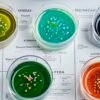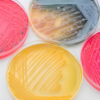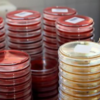
A Comprehensive Guide to Culture Media Series for Laboratory Applications
Culture media are foundational to microbiology, cell biology, and diagnostic research. Selecting the right series ensures accurate results, efficient growth, and reliable experimentation. This guide breaks down the different types of culture media, their uses, and best practices for laboratory success.
Key Types of Culture Media Series
1. Nutrient Media Series
Nutrient media provide basic sustenance for non-fastidious microorganisms. Common examples include:
- General-Purpose Media: Supports growth of a wide range of microbes (e.g., Nutrient Agar).
- Enriched Media: Enhanced with additives like blood or serum for demanding organisms.
2. Selective Media Series
Designed to isolate specific microorganisms by inhibiting unwanted growth. Examples:
- MacConkey Agar: Selects for Gram-negative bacteria.
- Sabouraud Dextrose Agar: Targets fungi while suppressing bacterial growth.
3. Differential Media Series
Identifies microbial species based on biochemical reactions. Key features:
- Blood Agar: Detects hemolytic activity in streptococci.
- Eosin Methylene Blue (EMB): Differentiates lactose fermenters.
4. Transport Media Series
Preserves specimen viability during transit. Ideal for clinical samples requiring delayed analysis.
5. Enrichment Media Series
Promotes growth of low-abundance pathogens by suppressing competitors.
How to Choose the Right Culture Media Series
- Objective: Define whether isolation, identification, or enrichment is needed.
- Sample Type: Match media to the specimen’s origin (e.g., clinical, environmental).
- Microbial Requirements: Consider oxygen sensitivity, pH tolerance, and nutrient needs.
Best Practices for Handling Culture Media
- Store media according to manufacturer guidelines (temperature, shelf life).
- Sterilize equipment to avoid contamination.
- Validate media performance with control strains.
Recent Posts
- Maximizing Microbial Culture Success with High-Quality Media
- Advantages of Ready-to-Use Petri Dishes in Microbial Testing
- Top Benefits of Using Ready-to-Use Petri Dishes in Microbial Testing
- Plant Tissue Culture Media: Engineering Growth and Genetic Breakthroughs
- Chromogenic Media: Transforming Food Safety Testing Through Precision Detection



